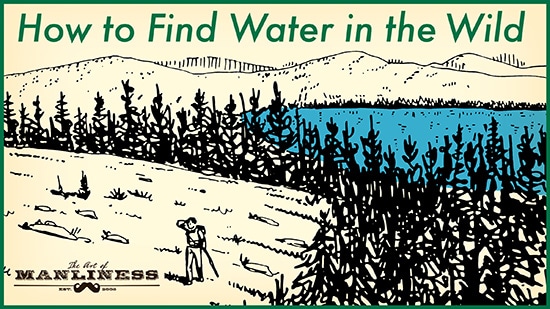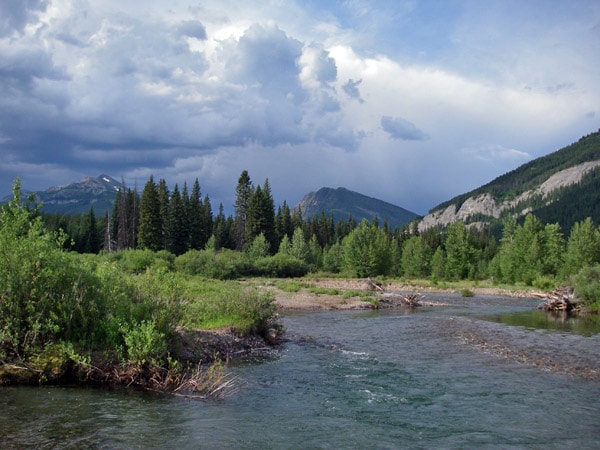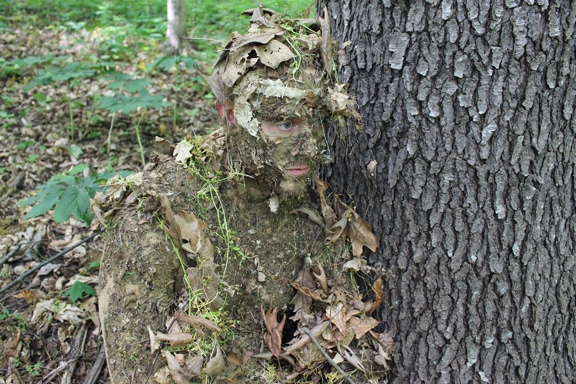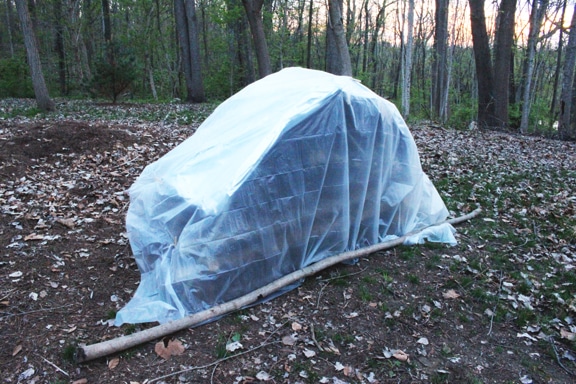
Even in the age of smartphones and GPS, stories of hikers getting lost in the wilderness still regularly appear in the news.
How do people get lost even when carrying their devices, and what should you do if you ever find yourself in that situation?
To answer those questions, I called up Creek Stewart, a wilderness survival expert and instructor and a longtime friend of AoM. Creek is the author of numerous books on wilderness survival and has been the host of several Weather Channel shows on the subject, including S.O.S.: How to Survive.
Besides his over two decades of survival experience, Creek told me that hosting S.O.S. gave him a unique perspective on how people get lost in the wilderness and what separates those who survive and get rescued quickly from those who flounder. When he hosted the show, he interviewed dozens of folks who had gotten lost in the wild, often in popular national parks filled with other people.
Below Creek shares his insights on how anyone can become disoriented when traversing the great outdoors and, more importantly, how to stay safe if it happens to you.
Pre-Trip Preparation: How to Ensure Your Quick Rescue in the Event You Get Lost
Creek says there are three things you can do before your trip that, should you manage to get lost during it, will dramatically increase your chances of a quick rescue and a safe return:
1. Tell people where you’re going and when to expect you back. Do this even if you’re going on a simple day hike near your home.
2. Ensure your phone is fully charged and bring a power bank. If you plan on using a digital app/map to guide your hike, you’ll of course want to make sure your phone is fully charged and has a backup power source as well. A phone is of no use if it doesn’t have power. People get lost, their phones die, and they can’t figure out where they are and how to get back on track.
A dead phone not only contributes to getting lost, but prevents a quick rescue as well.
Creek told me the one thing that all the people who had a slow rescue had in common was that they went out into the wild without a fully charged phone and without a way to power it back up. “The people who got found quickly typically had a fully charged phone, so when they got lost, they could make a call or at least put out a distress signal with GPS,” he told me.
If you’re looking for a power bank for outdoor excursions, I like and use the S.A.B.A.N.I. Portable Charger 35000mAh Power Bank. You can charge your iPhone up to five times with this power bank.
3. Consider carrying a Personal Locator Beacon (PLB). Creek recommends buying a PLB or satellite communicator. While they’re pricey and require a subscription, they will allow you to send a distress signal and share your GPS location even when you don’t have cell service.
Garmin makes two satellite communicators:
- Garmin inReach Messenger Handheld Satellite Communicator. This device is also a Personal Locator Beacon, and it works with your smartphone, so you can text even when you don’t have cell service.
- Garmin inReach Mini 2. It allows you to text and also has maps and weather forecasts. It’s more expensive than the original inReach due to those additional features.
Doing those three things before you leave for your trip will ensure you get found within 24 hours of getting lost in the wild.
In addition to doing those three things, Creek also recommends that you dress appropriately for the climate and bring some essential gear for any wilderness outing, even a short day hike.
Pack the essentials we list here.
Having those things on you in the event you get lost will help you stay safe and comfortable in the outdoors while you’re waiting to be found.
The Psychology of Getting Lost
If you stay on marked trails when you’re out in nature, your risk of getting lost is very low. Before you begin a hike, download an offline map on your phone in case you don’t have cell service. Again, make sure you have a power charger. And carry a paper map as a backup, too.
According to Creek, the common thread amongst people who get lost in the wild is that they step off the marked trails, and then things snowball from there:
People who get lost typically go to the off-beaten paths of wilderness areas. They get off the trail a bit and start recognizing that they’re getting off track but haven’t really admitted to themselves that they are. So they start getting panicky, and they keep moving in an effort to get their bearings, which only takes them further off track.
One surprising insight that Creek gleaned from interviewing people who got lost in the wilderness is that a big thing that drove people to keep moving when lost was the overwhelming fear that they might have to spend a night in the wilderness. As Creek observes, this fear can grow to a disproportionate size and actually increase the risk to someone’s safety, rather than mitigating it:
Spending the night in the woods typically isn’t a problem. If you’ve been camping, you’ve done it. But for some reason, when people are out for a day hike, there’s a real aversion to having to spend the night outside even though they’d probably be better off if they did since they wouldn’t get more lost.
So the knee-jerk reaction to keep moving when you find yourself lost in the wild is what gets you more lost.
Besides getting you further off track and making it more difficult for rescuers to find you, continuing to walk while lost 1) increases the chance of injury, and 2) depletes important resources like water and energy.
The First Step When You Get Lost: Stop Moving!
Because the thing that gets people really lost is continuing to move when they realize they’ve gotten a little lost, Creek emphasizes that the most critical action to take once you get this realization is to stay put. It sounds simple, but it’s surprisingly difficult for most people.
In the survival world, there’s a mnemonic that emphasizes the importance of this course of action, which is aptly rendered S.T.O.P.
Stop. Stop moving when you’re lost so you don’t get more lost!
Think. Think about your surroundings. Take some time to try to get your bearings. Use your maps.
Observe. Notice your surroundings. Can you hear vehicles? People? Do you see trail markers nearby? Can you smell fire?
Plan. Calmly make a plan for your next move. Based on your observations, you might decide you have enough information to try to get back on the trail. But you also might decide that it’s too late to make a self-rescue attempt and that you don’t have enough information to get your bearings. In that case, plan to stay put until rescuers can find you.
For more mnemonics that could save your life, check out this post.
The Three Priorities of Survival in the Wild
If you’ve decided to hunker down until you’re rescued, Creek recommends focusing on three key priorities:
1. Shelter. The type of shelter you build will depend on your specific situation. Generally, build something that will keep you safe from the elements. Here’s how to build a simple lean-to survival shelter.
2. Signal: Make yourself visible to potential rescuers. See below on how to do that.
3. Water: Find a water source or conserve what you have.
The order of these priorities may change depending on your specific situation, but addressing all three is crucial for survival.
Signaling for Help
When it comes to signaling, Creek suggests several effective methods:
- Fire: Three fires in a triangle is a universal distress signal.
- Visual markers: Create large X’s on the ground using sticks, rocks, or other materials.
- Reflective objects: Use anything shiny, even your phone screen, to catch attention.
Getting Comfortable With Being Uncomfortable
As we wrapped up our conversation, Creek hit home the importance of getting comfortable with being out in the wild:
Again, a lot of the panic that people who got lost experienced was due to being afraid of having to spend the night outdoors. With some minimal gear and some know-how, a night outdoors isn’t a big deal. Get comfortable with spending the night outdoors by going camping. Get comfortable with being uncomfortable. It can go a long way in reducing the panic if you get lost.
With a bit of preparation, you can avoid getting lost in the wild. But even if you do, following these tips will ensure you get rescued as quickly as possible.







